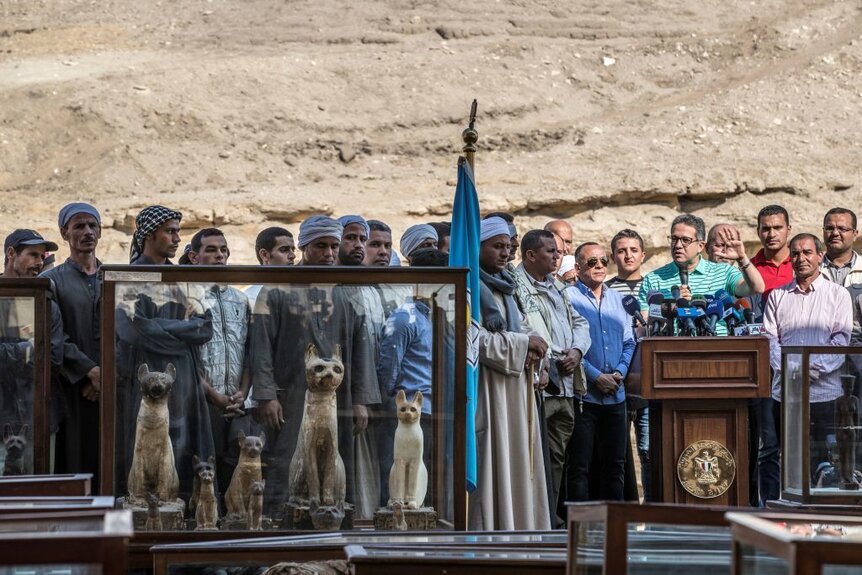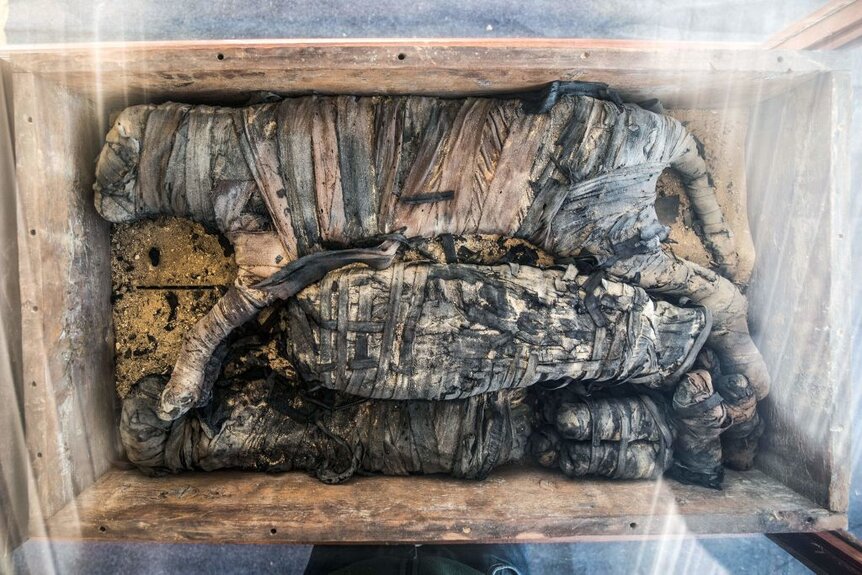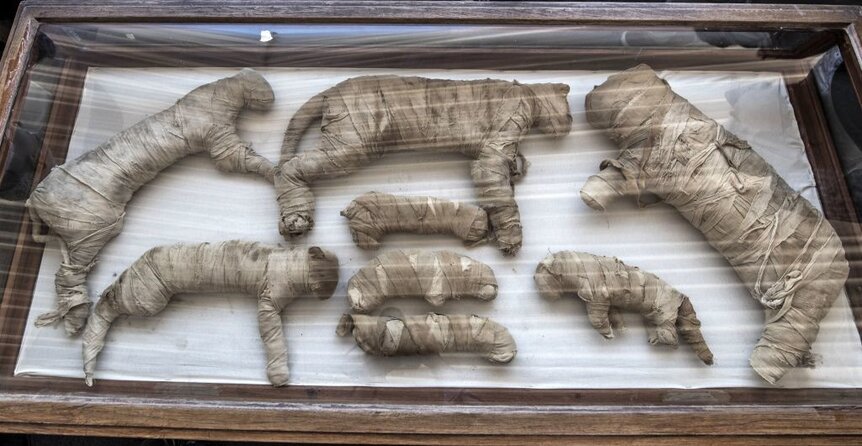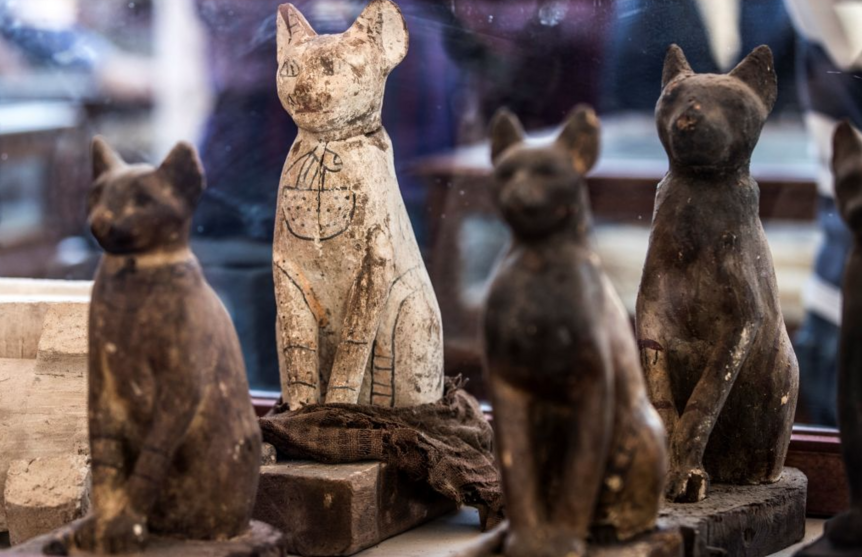Create a free profile to get unlimited access to exclusive videos, sweepstakes, and more!
Scientists are roaring over two mummified lion cubs discovered in Egyptian tomb
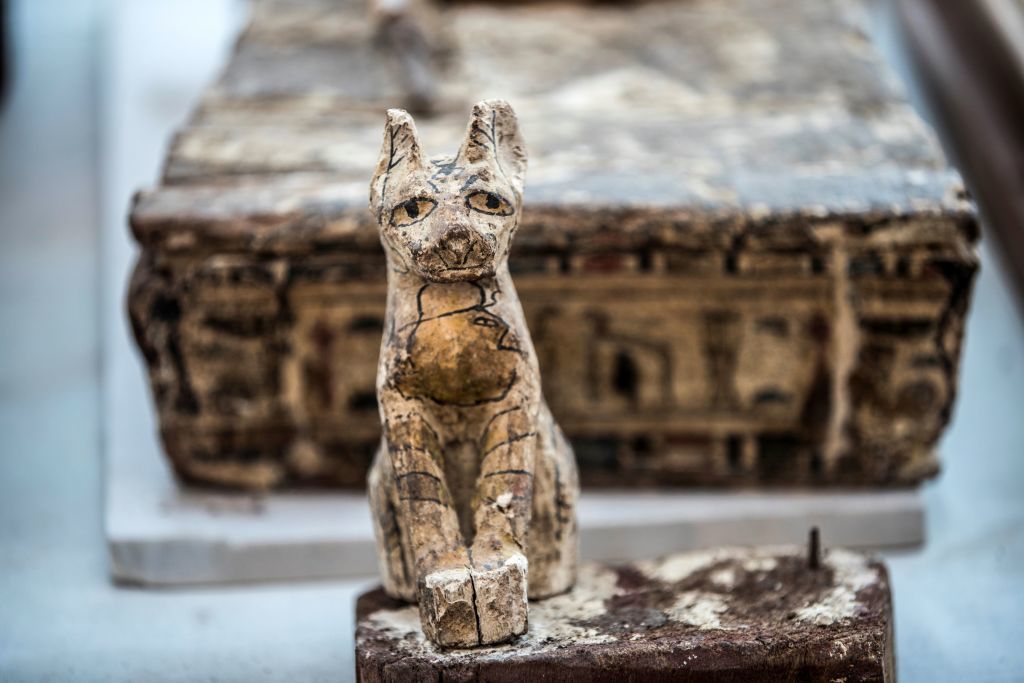
Ancient Egyptian tombs are sort of like a box of chocolates, you never know what you're gonna get... even a pair of mummified lion cubs dating back some 2,600 years!
In a rare discovery announced at a press conference by the Egyptian Ministry of Antiquities on Nov. 23, this dusty duo of long-deceased baby lions was found in a Saqqaran tomb filled to the brim with gold-decorated wood, stone, and bronze cat statues, and a cache of cat mummies.
"This is the first time [that a] complete mummy of a lion or lion cub" has been found in Egypt, said Mostafa Waziri, general secretary of Egypt's Supreme Council of Antiquities, who led the team that made the discovery.
According to Waziri, these little lions measure in at just under 3-feet long, which would indicate that they were not fully mature when they ascended to the happy hunting ground. A trio of other, much larger cat mummies of undetermined species were also found resting beside the two baby lions.
It's quite possible that the three bigger mummies could belong to leopards, cheetahs, or other types of indigenous big cats like the caracal. Nearly two dozen assorted mummies of smaller cats that could turn out to be African wildcats or jungle cats, both native to the region, were found near the lion cubs.One of the greater treasures, a tall bronze statue representing Bastet, an Egyptian cat goddess, was discovered alongside approximately 100 wooden cat statues. Bastet served an important protective role in Egyptian mythology, while also being linked to music, dancing, and pleasure. This unusual site was most likely used as a specific complex for burying kitties.
The fertile feline territory is located at Giza's Saqqara necropolis south of Cairo. Scientists have theorized that the spot where this "cat"-acomb was revealed is apparently a purr-iffic region, as many archaeological digs in the vicinity have unearthed remains of cat mummies and cat statues, including the partial remains of an adult lion skeleton by a French crew in 2004. Which makes sense, since this was a place of worship and commemoration for the Egyptian cat goddess, Bastet, and her son, the lion god Miysis.
